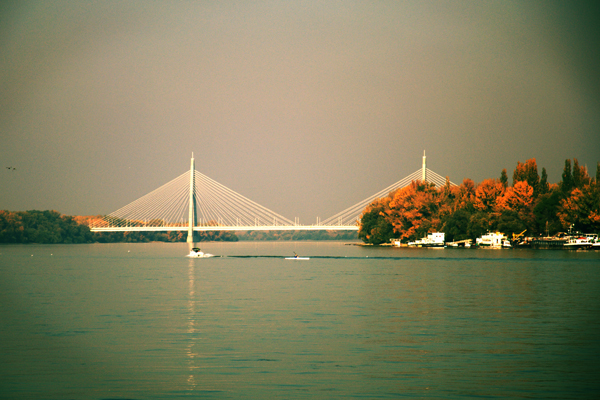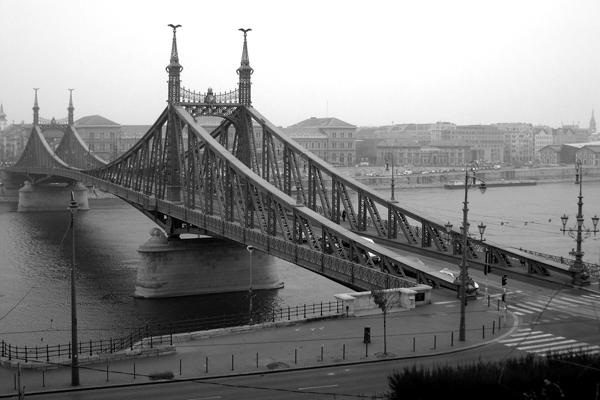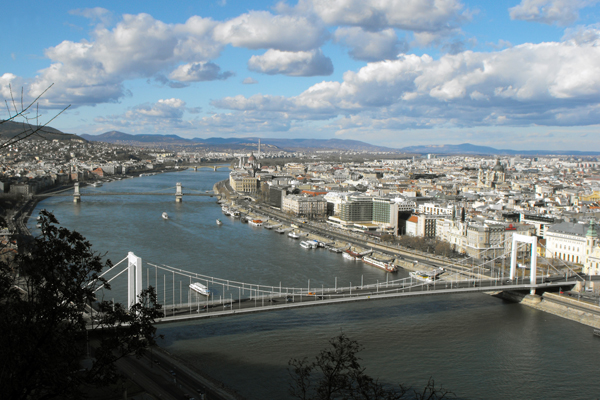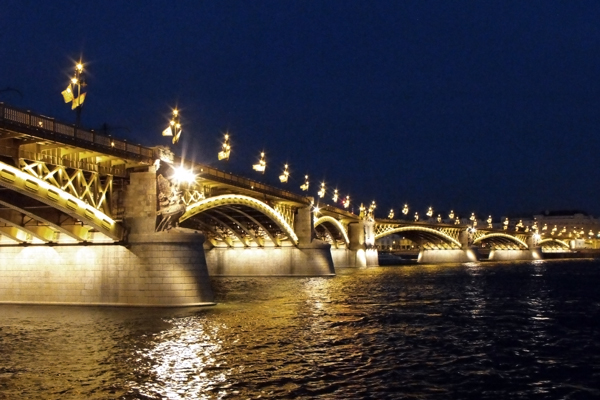The second-longest bridge in the country is Megyeri-bridge in Northern-Pest, has a length of 1862 meters and was opened in 2008.
The best-known part is 591 meters long, stretches above the Big-Danube-branch, and it’s deck was built of 12-meter long prefabricated steel elements. Its highest point at the pillars reaches 120 meters. The two pillars form letters ‘A’, whose upper third can be visited: there’s a glass visitor’s center. The legs of the pillars are cavernal, their wall depth is 1 meter at the bottom and it decreases upwards until 0.4 m. A vote was started on the Internet to designate the bridge, and for a while the name Chuck Norris was in leading position. Stephen Colbert, the American comedian learned this and he advocated the bridge in his show. In the end, the name Megyeri-bridge won and got into public knowledge, referring to the fact that it connects Békásmegyer and Káposztásmegyer, two regions in Pest.




